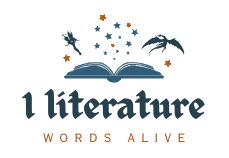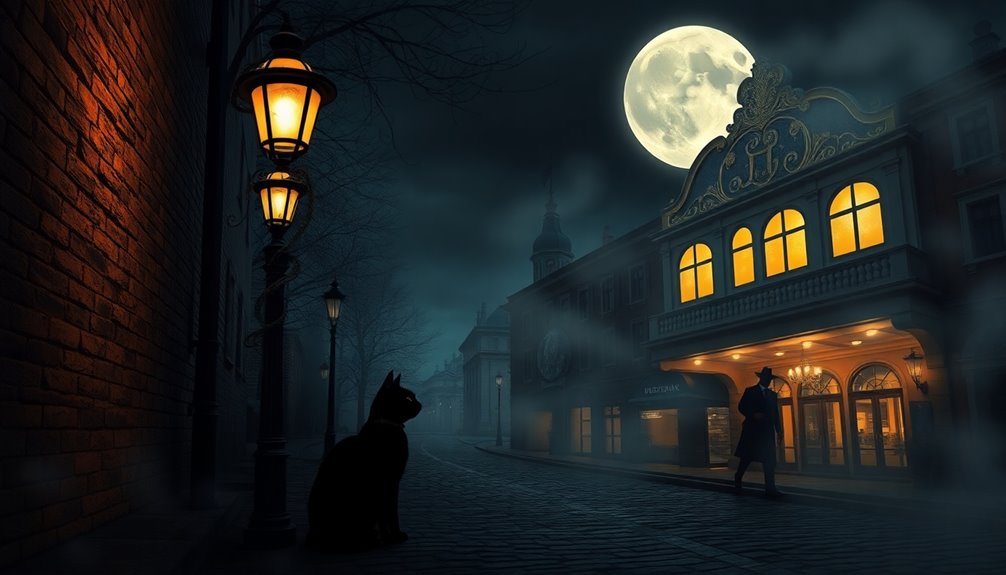*The Master and Margarita* takes you on a surreal journey through love and morality in 1930s Soviet Russia. Mikhail Bulgakov crafts a narrative that intertwines the chaos of Woland, who embodies the Devil, with the poignant love story of the Master and Margarita. You'll encounter themes of good versus evil and experience the absurdity of life against a backdrop of censorship and moral decay. Each character, from the oppressed Master to the transformative Margarita, reveals deeper truths about personal agency and sacrifice. There's so much more to explore within its layers and symbolism, inviting you to uncover its full brilliance.
Overview of the Novel
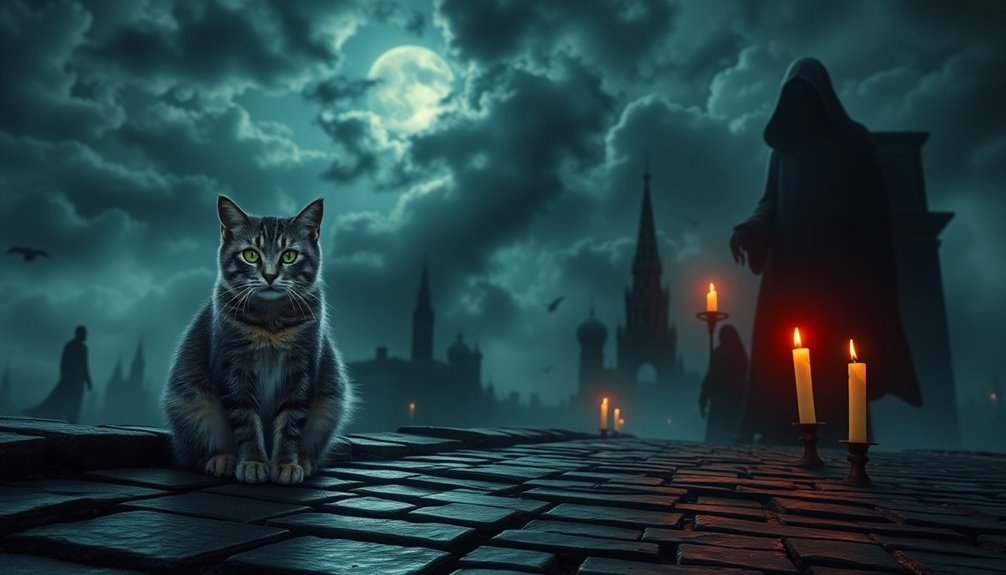
Mikhail Bulgakov's "The Master and Margarita" is an enchanting novel that blends reality and the supernatural, set against the backdrop of 1930s Soviet Russia. The narrative weaves together two primary stories: one follows the Devil, known as Woland, as he wreaks havoc in Moscow, while the other details the life of the Master, a disillusioned writer, and his devoted lover, Margarita.
Through satire and dark humor, Bulgakov critiques the oppressive nature of Soviet censorship and society's refusal to embrace magical perspectives. As Woland and his entourage introduce chaos to Moscow, the story's philosophical depth unfolds through the Master's struggles and Margarita's unwavering loyalty. This exploration of personal growth amid adversity mirrors the themes found in David Copperfield. Additionally, the characters' experiences reflect the immigrant experience of navigating societal challenges, much like those depicted in early 20th-century Brooklyn.
Interspersed with this modern tale are historical vignettes focusing on Pontius Pilate's trial of Yeshua, which adds a layer of complexity and timelessness to the narrative. These dual narratives culminate in a rich tapestry that explores themes of love, betrayal, and the absurdity of life. The intertwining of the supernatural with everyday experiences echoes the concept of magical realism, enhancing the novel's profound emotional and philosophical nuances.
Published posthumously, "The Master and Margarita" stands as a significant work in Russian magical realism, revealing not just Bulgakov's genius but also his defiance against the constraints of censorship in his time.
Author's Background and Influence
Born in Kyiv in 1891, Mikhail Bulgakov's journey from medicine to literature profoundly shaped his narrative style and thematic concerns.
After relocating to Moscow in 1921, he encountered intense censorship and persecution due to his sharp critiques of life in the Soviet Union. This experience directly influenced the satirical and surreal elements that permeate *The Master and Margarita*. Resistance movements during WWII showcased the power of ordinary individuals standing against oppression, a theme echoed in Bulgakov's narrative.
Written between 1928 and 1940, the novel reflects Bulgakov's personal struggles, including health issues and the frustration of seeing many of his works rejected by Soviet authorities. These challenges echo the broader notion of systemic oppression faced by artists under authoritarian regimes.
His encounters with censorship and artistic oppression resonate deeply in the character of the Master, who battles despair over his rejected manuscript, mirroring Bulgakov's own challenges as an artist in a repressive society. The spirit of resistance embodied in historical movements, such as the collective action against oppressive regimes, parallels the Master's defiance in the novel.
Despite facing obscurity during his lifetime, Bulgakov's influence grew considerably after his death.
*The Master and Margarita* eventually emerged as a cornerstone of 20th-century literature, inspiring countless writers and artists around the globe.
Through his unique blend of surrealism and social commentary, Bulgakov not only captured the essence of his time but also left a lasting legacy that continues to resonate today. His works, much like Richard Wright's, serve as powerful narratives reflecting the struggles against social injustice that resonate across cultures and time periods.
Major Themes and Symbols
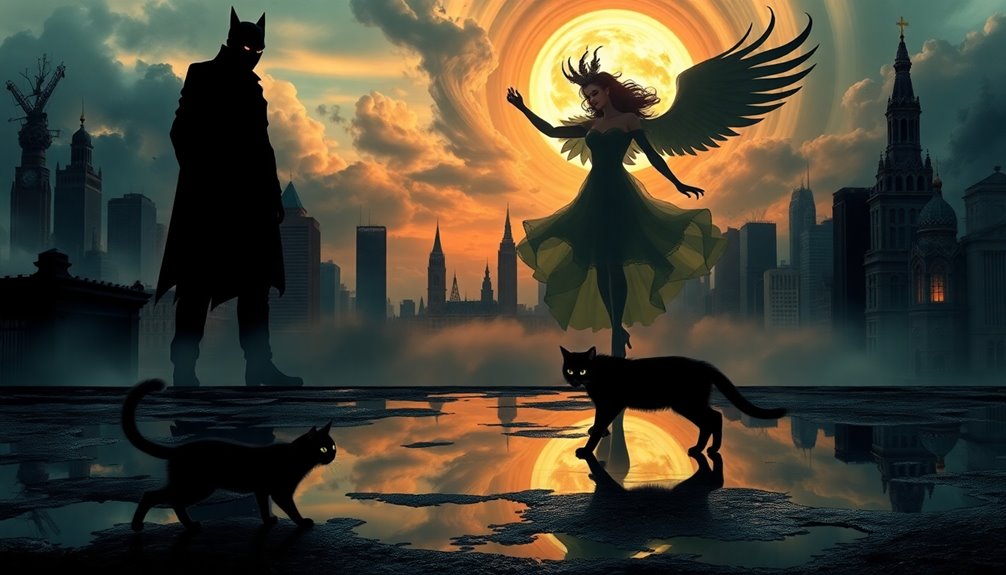
At the heart of *The Master and Margarita* lie profound themes that explore the complexities of good and evil, the absurdity of life, and the struggle against censorship. You see, Woland embodies the Devil, challenging Soviet materialism and exposing society's moral corruption. This conflict showcases the perpetual battle of good versus evil, urging you to reflect on your own moral choices.
Censorship is another vital theme, mirroring Bulgakov's struggles under Stalin's regime. The Master's frustrations and the fate of his manuscript highlight the oppressive forces artists face, akin to the challenges faced by many unsung champions of social change throughout history. This theme resonates with the historical injustices surrounding medical research ethics that have long marginalized certain groups.
The absurdity of life comes alive through surreal events, like Berlioz's prophetic death and the chaotic antics of Woland's retinue, illustrating life's unpredictability.
Margarita's transformation is central to the narrative; she sells her soul to the Devil out of love and loyalty to the Master. This act underscores the themes of sacrifice and personal agency in a repressive society.
Key symbols, such as the black poodle representing the duality of good and evil, and sunflower oil foreshadowing death, enrich the story, intertwining fate with the characters' moral choices. These elements make *The Master and Margarita* a truly surreal masterpiece. Additionally, the narrative encourages reflections on resilience and hope amidst the chaos, echoing the profound human experiences explored in various literary works.
Character Analysis and Development
In "The Master and Margarita," you'll notice how the major character dynamics drive the narrative forward.
As characters like the Master and Margarita undergo significant transformations, their growth reveals deeper themes of love and sacrifice against a backdrop of societal repression. This exploration of character development not only highlights individual struggles but also reflects the broader disillusionment of the time. Additionally, the theme of resilience amidst adversity is echoed in the characters' journeys, showcasing their capacity to persevere against overwhelming odds. Ultimately, the impact of past actions becomes a crucial element in shaping their identities and relationships throughout the story. Furthermore, the characters' experiences resonate with the transformative power of trauma recovery, illustrating how overcoming personal challenges can lead to profound personal growth.
Major Character Dynamics
The character dynamics in "The Master and Margarita" reveal a complex interplay of power, love, and moral conflict that drives the narrative forward.
Margarita's evolution from a submissive lover to a formidable force illustrates the transformative power of love, as she willingly sells her soul to Woland to reclaim her Master.
Woland, embodying the Devil, challenges the moral decay of Soviet society, orchestrating chaos while exposing the flaws of the literary elite.
- The Master reflects Bulgakov's struggles with artistic integrity, haunted by his rejected novel about Pontius Pilate.
- Pontius Pilate grapples with his moral responsibilities, torn between personal conscience and societal expectations.
- Ivan Ponyrev, the disillusioned poet, spirals into madness, searching for meaning amid absurdity.
- The interactions between these characters highlight their conflicting desires and moral quandaries.
- Each character reveals a facet of human nature, from the pursuit of love to the struggle for artistic expression.
Through these dynamics, Bulgakov critiques society while exploring profound themes of love, power, and the complexities of human morality.
Transformation and Growth
Character dynamics in "The Master and Margarita" set the stage for profound transformation and growth among the key figures. The Master evolves from a despairing, rejected author into a beacon of artistic integrity, mirroring Bulgakov's own struggles with censorship. His journey symbolizes the power of love and the quest for redemption.
Margarita's character develops from a devoted lover into a formidable figure who embraces her supernatural abilities, defying societal norms for the sake of love. Her courage highlights growth through the willingness to challenge the status quo.
Ivan Ponyrev, known as Bezdomny, shifts from madness to self-awareness, seeking truth amidst chaos. His journey illustrates how intense experiences can foster personal growth and understanding.
Meanwhile, Pontius Pilate grapples with moral dilemmas, revealing his inner conflict as he faces guilt over his inaction during Yeshua's trial. His struggle reflects the complexities of moral choices and their consequences.
Together, these characters' transformations emphasize the intertwining of love, redemption, and the pursuit of artistic integrity, showcasing how personal growth can arise from the most challenging circumstances.
Historical and Cultural Context
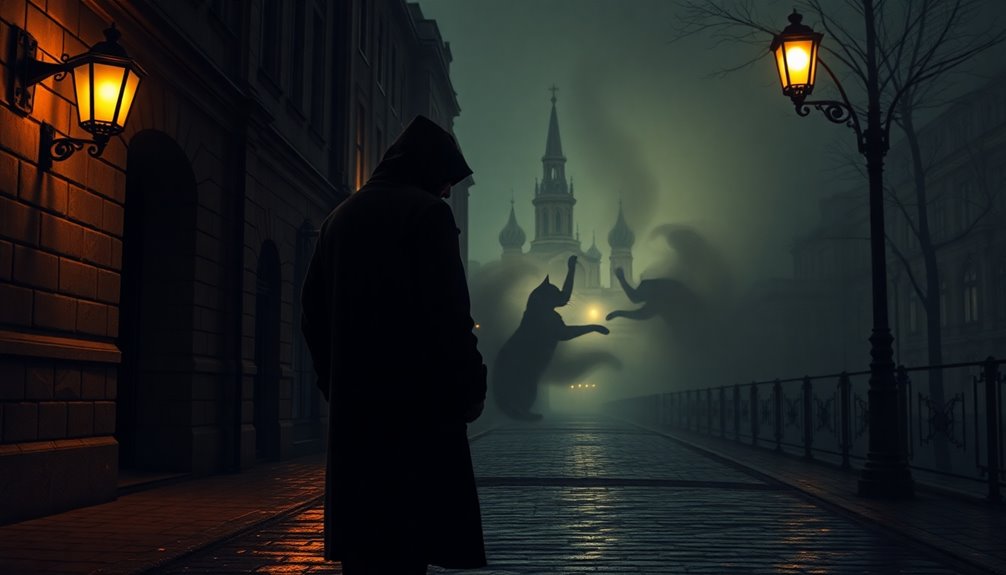
As you explore "The Master and Margarita," consider how Stalin's regime cast a long shadow over Bulgakov's writing. His experiences with censorship and the demand for artistic freedom shaped the novel's critique of Soviet society and its moral decay. You'll also see how the rich tradition of Eastern European literature uses humor and irony to resist oppression, making Bulgakov's work resonate with those who lived through those challenging times. The narrative echoes the profound impact of small acts of defiance against oppressive forces, similar to the Quangels' resistance in "Alone in Berlin." Education serves as a crucial tool for overcoming adversity and fostering resilience, highlighting the importance of global education. Additionally, the story encourages reflection on the role of individual actions in challenging tyranny, much like the Quangels' courageous stand against the Nazi regime.
Stalin's Regime Influence
Amid the oppressive atmosphere of Stalin's regime, Mikhail Bulgakov crafted *The Master and Margarita*, a novel deeply influenced by the censorship and repression of the time. You can see how Bulgakov's personal struggles with artistic freedom and the harsh realities of Soviet society shaped this surreal masterpiece.
The moral decay and absurdity of life under Stalin emerge through the chaotic events and dual narratives of the story.
Consider these key elements that reflect this influence:
- Bulgakov faced rejection for his earlier works due to political themes.
- The Master and Margarita was published posthumously, symbolizing artistic freedom.
- The character Woland, representing the Devil, critiques materialist ideology.
- The novel mirrors the absurdities and contradictions of Soviet life.
- Many writers were persecuted for their dissenting views during this time.
Through the lens of Woland, Bulgakov exposes the moral complexities of human nature, traversing a landscape marred by totalitarian rule.
The novel stands as both a critique of the regime and a tribute to the enduring spirit of creative expression in the face of repression.
Censorship and Artistic Freedom
Censorship's grip on art during Stalin's regime stifled creativity and silenced dissenting voices, creating a climate where writers like Mikhail Bulgakov struggled to express their truths. His experiences with censorship are vividly reflected in *The Master and Margarita*, a novel born from despair as he faced the destruction of his first manuscript in 1930.
Written between 1928 and 1940, the book critiques the moral decay of Soviet society, using satire to highlight the absurdities and limitations imposed by censorship.
Bulgakov's portrayal of the Master, who grapples with the rejection of his novel, mirrors the author's own battles with the oppressive Soviet literary establishment. While censorship sought to control artistic freedom, *The Master and Margarita* became a symbol of resilience, showcasing the enduring desire for expression despite repression.
The novel's posthumous publication in 1967 in Paris marked a significant moment, allowing it to reach a broader audience and gain acclaim.
Ultimately, Bulgakov's work not only echoes his struggles but also serves as a tribute to the power of art in confronting authority and advocating for freedom in the face of censorship.
Eastern European Literary Resistance
Artistic expression in Eastern Europe often became a form of resistance against oppressive regimes, where writers employed dark humor and satire to navigate the grim realities of their societies. Mikhail Bulgakov's *The Master and Margarita* is a prime example, critiquing Soviet life through its surreal narrative. The absurdity in Bulgakov's work resonates with your understanding of the struggles faced by individuals under communism, where humor served as a coping mechanism during times of moral decay.
The novel's turbulent publication history highlights the pervasive censorship that plagued Eastern European literature. Its first complete edition didn't appear until 1967, reflecting Bulgakov's defiance against artistic repression.
As you dive deeper, you'll notice how the duality of good and evil permeates the text, illustrating a common theme in Eastern European literature.
- Dark humor as a coping tool
- Censorship's impact on creativity
- Autobiographical elements in literature
- The struggle against moral decay
- The interplay of reality and surrealism
In this way, Bulgakov's work stands as a tribute to the resilience of the Eastern European literary spirit amidst overwhelming odds.
Adaptations and Cultural Impact
Numerous adaptations of "The Master and Margarita" across theater, film, and music highlight its lasting cultural impact and relevance. This literary classic has inspired countless stage productions, showcasing its dramatic potential and rich character dynamics. Each adaptation captures the novel's intricate themes, from the satirical critique of Soviet society to the exploration of good and evil.
Mick Jagger even loosely based the iconic song "Sympathy for the Devil" on Bulgakov's work, illustrating the novel's influence on popular music and culture. Contemporary authors like Neil Gaiman and Susanna Clarke have drawn from its themes, weaving similar blends of fantasy and philosophical inquiry into their own narratives.
The cultural significance of "The Master and Margarita" extends beyond the page; it sparks discussions in academic circles, emphasizing its relevance in analyzing societal issues. This ongoing dialogue not only cements its status as a literary classic but also guarantees that its powerful satire continues to resonate with audiences today.
As you explore these adaptations, you'll see how Bulgakov's masterpiece remains a profound touchstone, influencing creatives across various media and inspiring new interpretations.
Conclusion
In the swirling dance of reality and fantasy that is *The Master and Margarita*, you find a reflection of your own struggles and triumphs. Bulgakov weaves a tapestry of love, power, and redemption, inviting you to question the world around you. As you close the book, the echoes of his characters linger in your mind, reminding you that even in chaos, beauty can bloom. You're left with a spark of inspiration, urging you to embrace life's surreal moments.
